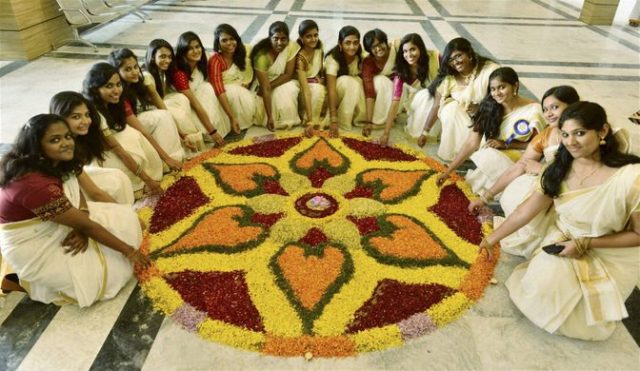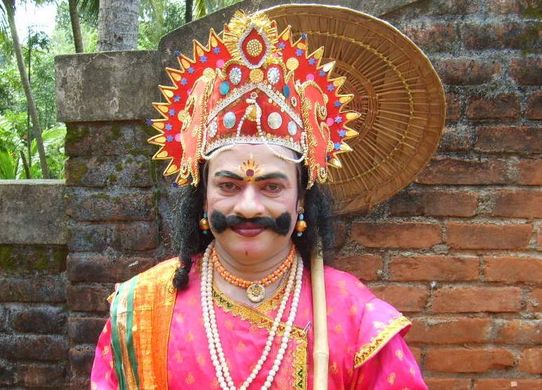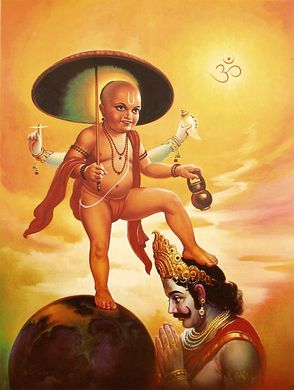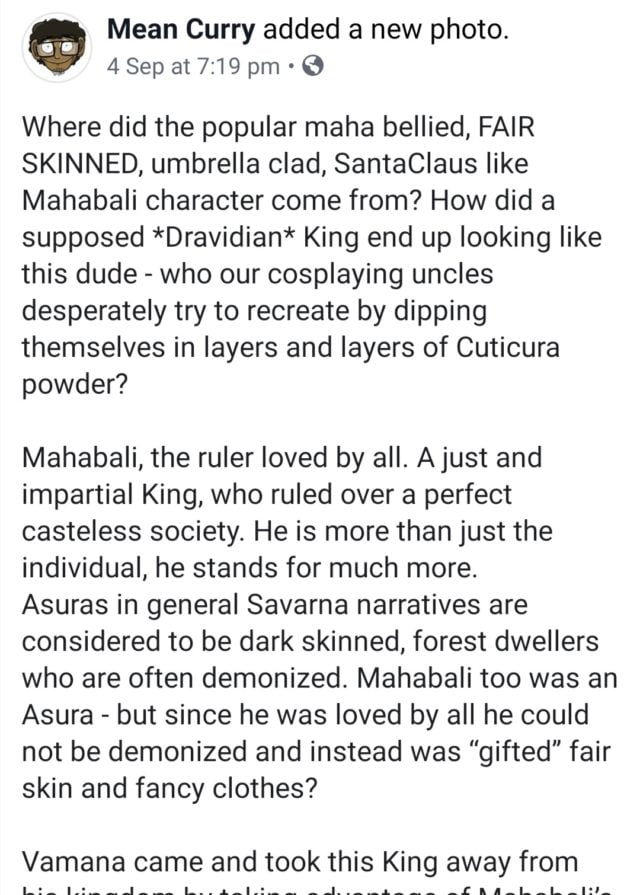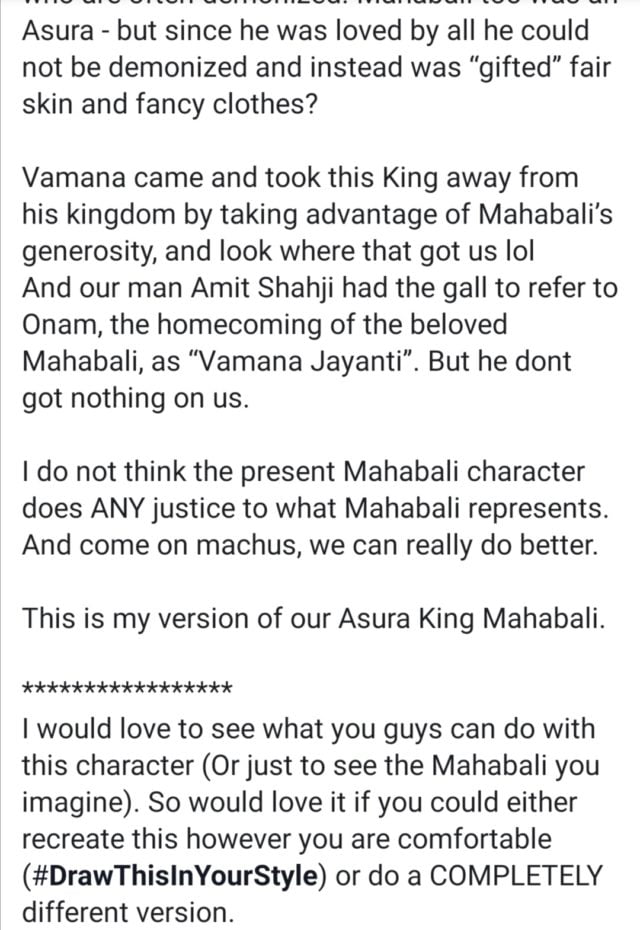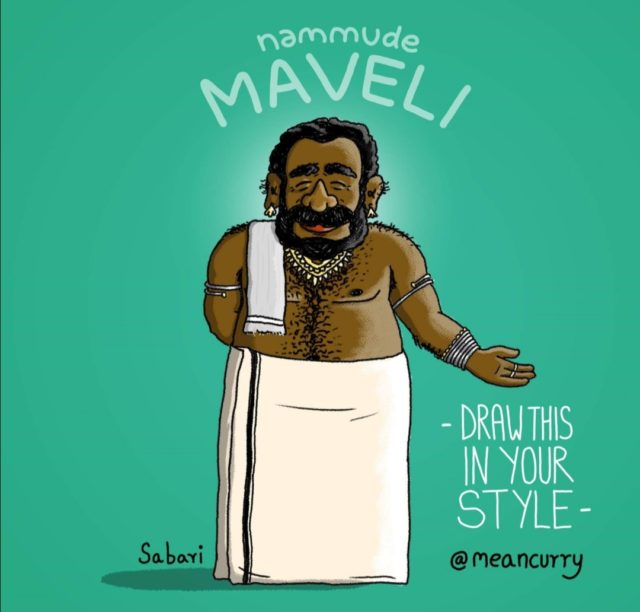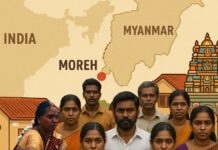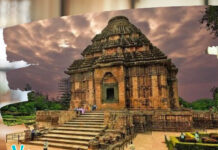The Malayali festival of Onam is a HUGE deal in Kerala.
Schools give a week of holidays for celebrations, which involve making elaborate pookalams (rangolis made of flowers), lighting tall brass lamps, dance, music, and playing on swings.
Onam is the harvest festival of Kerala, which has become a common means of celebration for people of all religious backgrounds.
What is the legend behind Onam?
According to legend, an asura (demon) king named Mahabali (also referred to as Maveli or Onathappan) ruled Kerala several centuries ago.
He was hugely popular and a good ruler, but the immense popularity of an asura made the devas (gods) feel insecure.
They approached Lord Vishnu to help them, and he took the form of Vamanan, a dwarf, and went to meet Maveli.
Maveli was extremely benevolent and agreed to grant Vamanan whatever he wanted. Vamanan said he was a poor Brahmin, and asked to be given 3 steps on land for him to stay.
The first step encompassed the entire earth, and the second encompassed the skies. Seeing Vamanan expand to such huge proportions, Maveli understood that if he took his third step, the earth would be destroyed. So he allowed Vamanan’s third step to be on his own head, and was buried under the earth as a result.
However, due to his immense popularity and good nature, his subjects weren’t ready to let him go. So, Maveli was allowed to come to Kerala and visit his subjects once a year, and this festival came to be known as Onam.
To this date, Malayalis keep their doors open and celebrate the joyful return of their beloved King.
Read More: In Pics: If You Haven’t Tried These Kerala Snacks, You Haven’t Lived Life
An Aryan attempt at re-writing
Amit Shah famously courted controversy and became the butt of jokes in Kerala when he suggested that Onam be renamed Vamana Jayanti, to celebrate Vamanan instead of an asura king.
Of course, Malayalis weren’t having it, and the idea was booted.
It is believed that thousands of years ago, the Dravidian people were often described as asuras by the fair-skinned devas. The dark skin and different features of South Indians were used as a means of discrimination by those who claimed to have Aryan roots.
As history was written, people of Dravidian descent (Ravana being another classic example) were cast as asuras or demons, while fair skinned people from Northern India were portrayed as gods.
The #NammudeMaveli Project
The popular Facebook page Mean Curry Comics (a pun on meencurry, which means fish curry in Malayalam) has put up a post speaking of how the fair appearance of Maveli we see in the media today isn’t an accurate description of what a Dravidian would have looked like.
They also speak up about how Aryan perceptions have skewed the origins of the Maveli legend.
They have started the #NammudeMaveli (meaning Our Maveli) project, encouraging followers to share their sketches of what they think Maveli actually looked like. They have also shared one of their own.
What I think, as a Malayali
As a Malayali, I absolutely love this project, and laud this effort to undo the layers of whitewashing that poor Maveli had to undergo.
In a country where dark skinned people are bombarded with ads and films showing a preference for fairness, it’s high time we discarded these stupid notions and proudly embraced our roots.
Image Credits: Google Images, Mean Curry
Sources: East Coast Daily, Mean Curry
Find the author online at: @samyukthanair_
More Recommendations:
This Is How Kerala’s Malabar Region Tells The Story Of Ramayana In The Muslim Community



























